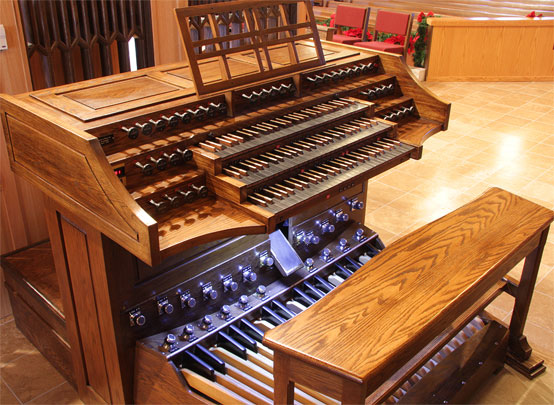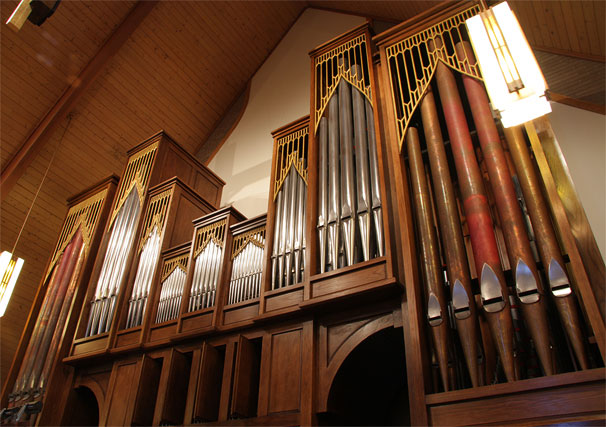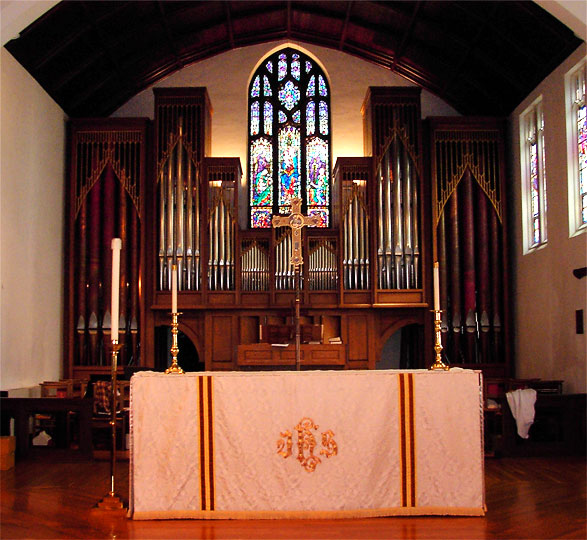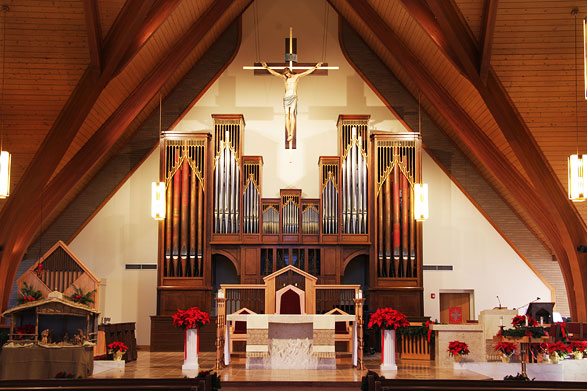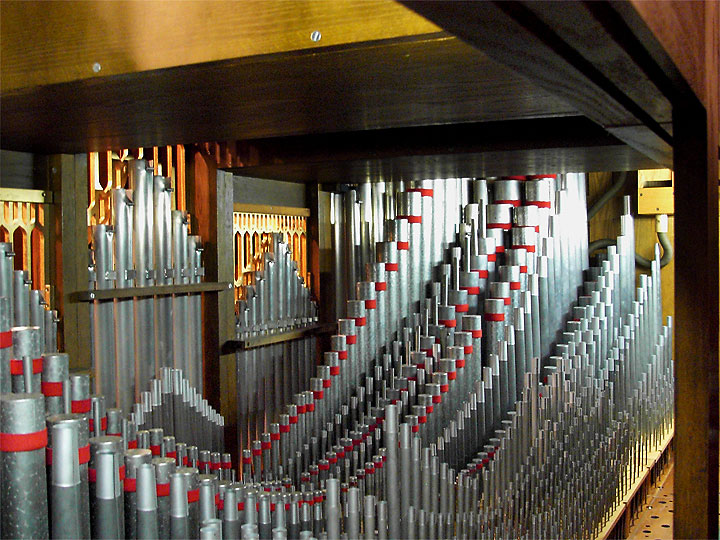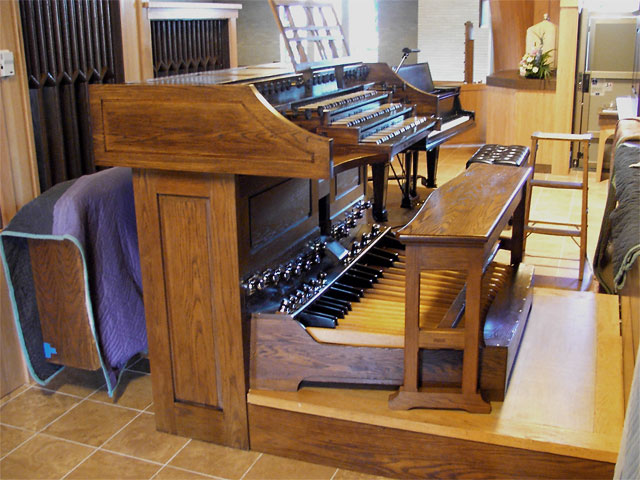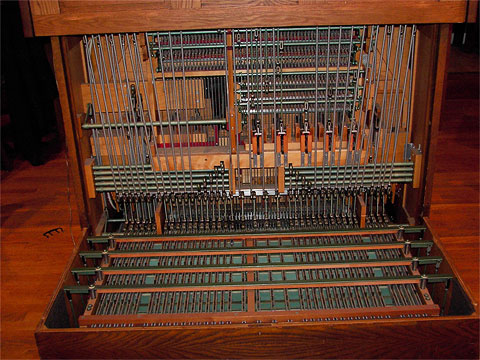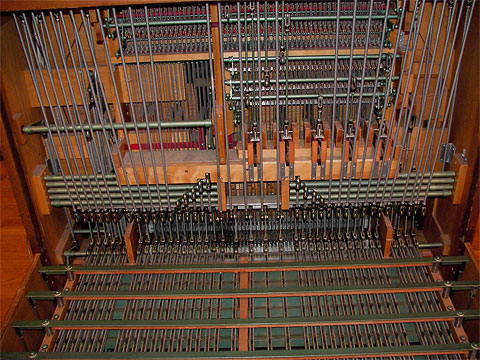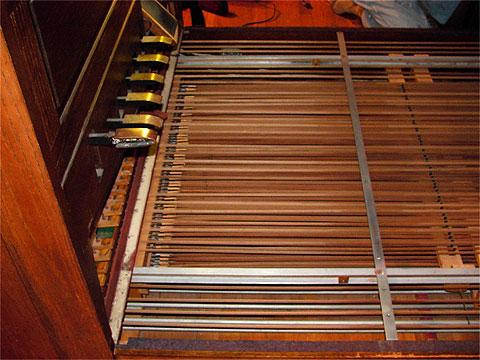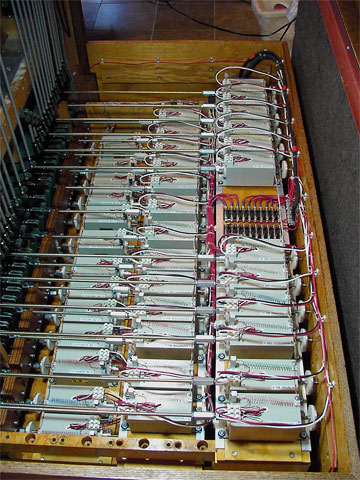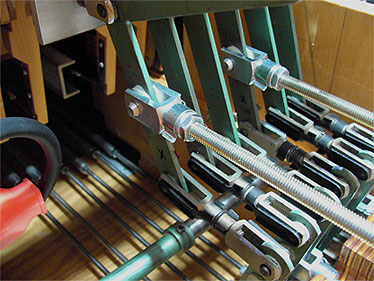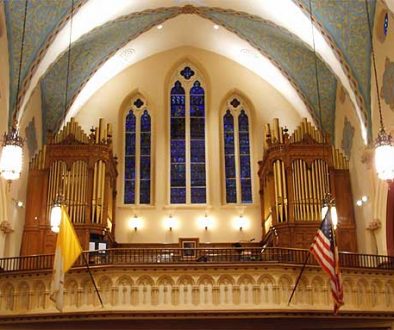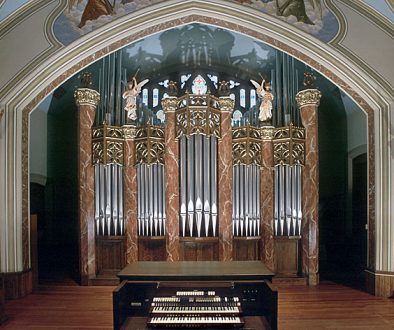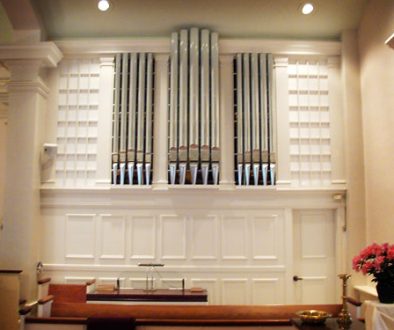Saint Theresa of Lisieux Roman Catholic Church
South Hadley, Massachusetts
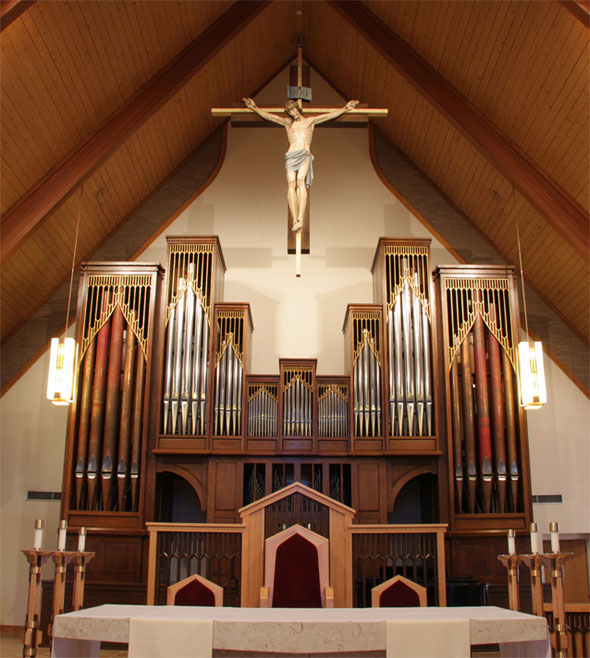
Dedication Recital, Sunday, October 5, 2008 by
John Weaver
Retired Director of Music at Madison Avenue Presbyterian Church, New York City
This organ was designed by Lawrence I. Phelps, Tonal Director of Casavant Frères in consultation with Donald Teeters, Organist of St. Andrew’s Episcopal Church, Wellesley, at the time of the purchase, and the Church’s advisor Donald Willing. The instrument was built in the Canadian factory during 1964 under the mechanical direction of Karl Wilhelm; and, installation of the organ was completed on February 26, 1965.
The entire organ is presented in a freestanding case, now elevated above floor level on a new deck structure for the South Hadley reinstallation. The console remains in its original detached and reversed position. The Brustwerk is enclosed behind four rotating panels controlled mechanically by an expression pedal at the console. There are four divisions of pipework, playable from 3 manuals (56 notes’ compass) and Pedals (32 notes’ compass), comprising 32 speaking stops, 38 registers, 46 ranks, and 2,264 individual pipes. The wind pressure is 2” water column throughout. The Hauptwerk and Positiv divisions share the same main windchests (in three sections), using alternate tone channels to intersperse stops between both divisions in the same note order. The façades include speaking pipework in copper from the Pedal Principal 16’ in the outside towers, and in polished tin from the Hauptwerk Principal 8’ and the Positiv Principal 4’ across the main case. The pipe shades are cut from plywood, then gilded and glazed, and shaped as geometric patterns more recently expanded upon in the design for new sanctuary woodwork in St. Theresa’s Church. The key-playing, coupling, and stop actions are completely mechanical, augmented during the present rebuilding with an electric Dual Registration system and solid-state capture combination action.
Early in 2004, St. Andrew’s Church, Wellesley offered this Casavant organ for sale through the Organ Clearing House, in anticipation of their own sanctuary renovation and the installation of a new pipe organ, of substantially different tonal foundation than their Organ-Reform style tracker of 1964.
The physical size and shape of the Wellesley Casavant were, perchance, suited exactly to the space and layout of the South Hadley sanctuary; the musical characteristics of the pipe organ were, in theory, appropriate to St. Theresa’s Church as well, in number of ranks and substance of pitch. In fact, the volume of space, acoustical support, and existing ceiling material in South Hadley were expected to accommodate the Casavant pipe organ, and its original voicing, even more successfully than St. Andrew’s space in Wellesley did. Thus, negotiations for the purchase of Casavant Opus 2791 were begun by St. Theresa’s Church in the summer of 2004, following a careful survey and evaluation of this instrument by Messrs. Czelusniak et Dugal, Inc.
The purchase of the Wellesley Casavant for South Hadley was finalized through the Organ Clearing House in the spring of 2005, at which time, the Organbuilders completed documentation of the organ, and its disassembly and moving into storage at St. Theresa’s Church, pending renovation and rebuilding. In the meanwhile, St. Andrew’s Church, Wellesley, has undergone a transformation of its sanctuary area, and enjoys the very successful installation of a new, two-manual, tracker pipe organ from the Montréal builders Juget-Sinclair. Today, we celebrate the complete renovation and preservation, carefully according to original disposition and voicing, of Casavant Frères, Limitée, Opus 2791, as executed by Czelusniak et Dugal, in the renovated sanctuary and excellent acoustics of St. Theresa of Lisieux Church, South Hadley.
STOPLIST
| BRUSTWERK | 8 stops | 8 ranks | |||
|---|---|---|---|---|---|
| 1 | Holzgedackt | 8' | 56 | pipes | |
| 2 | Rohrflöte | 4' | 56 | “ | |
| 3 | Principal | 2' | 56 | “ | |
| 4 | Waldflöte | 2' | 56 | “ | |
| 5 | Quinte | 1-1/3' | 56 | “ | |
| 6 | Zimbel II | 1/4' | 122 | “ | |
| 7 | Regal | 8' | 56 | “ | |
| 8 | Tremulant | ||||
| HAUPTWERK | 8 stops | 13 ranks | |||
| 9 | Quintadena | 16' | 56 | pipes | |
| 10 | Principal | 8' | 56 | “ | |
| 11 | Rohrflöte | 8' | 56 | “ | |
| 12 | Octave | 4' | 56 | “ | |
| 13 | Spitzflöte | 4' | 56 | “ | |
| 14 | Octave | 2' | 56 | “ | |
| 15 | Mixtur VI | 1-1/3' | 336 | “ | |
| 16 | Trompete | 8' | 56 | “ | |
| POSITIV | 8 stops | 12 ranks | |||
| 17 | Gedackt | 8' | 56 | pipes | |
| 18 | Principal | 4' | 56 | “ | |
| 19 | Gedacktflöte | 4' | 56 | “ | |
| 20 | Gemshorn | 2' | 56 | “ | |
| 21 | Octave | 1' | 56 | “ | |
| 22 | Sesquialtera II | 2-2/3' | 112 | “ | |
| 23 | Scharf IV | 1/2' | 224 | “ | |
| 24 | Krummhorn | 8' | 56 | “ | |
| PEDAL | 9 stops | 13 ranks | |||
| 25 | Principal | 16' | 32 | pipes | |
| 26 | Subbass | 16' | 32 | “ | |
| 27 | Octave | 8' | 32 | “ | |
| 28 | Pommer | 8' | 32 | “ | |
| 29 | Choralbass | 4' | 32 | “ | |
| 30 | Nachthorn | 2' | 32 | “ | |
| 31 | Mixtur V | 2' | 160 | “ | |
| 32 | Fagott | 16' | 32 | “ | |
| 33 | Schalmei | 4' | 32 | “ | |
| COUPLERS | |||||
| 34 | Hauptwerk to Pedal | ||||
| 35 | Positiv to Pedal | ||||
| 36 | Brustwerk to Pedal | ||||
| 37 | Positiv to Hauptwerk | ||||
| 38 | Brustwerk to Hauptwerk | ||||
| COMBINATION ACTION AND ACCESSORIES | |||||
| Brustwerk Expression Pedal | |||||
| Capture Combination Action System for Dual Registration | |||||
| Slider Stop Actions | |||||
| 32 Levels of Combination Memory, each lockable individually | |||||
| General Combinations – 20 Thumb Pistons duplicated by Toe Studs | |||||
| Setter and General Cancel Thumb Pistons | |||||
| Six Reversible Pistons: | |||||
| Hauptwerk to Pedal | |||||
| Positiv to Pedal | |||||
| Brustwerk to Pedal | |||||
| Positiv to Hauptwerk | |||||
| Brustwerk to Hauptwerk | |||||
| Full Organ (with Indicator Lamp) | |||||
| Casavant in Wellesley before the Move | |||||
| Casavant Opus 2791 now in South Hadley |
